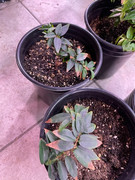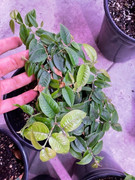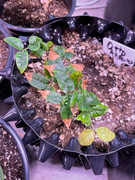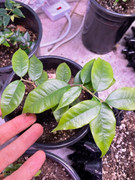"You might get hit by a bus/ there might be a nuclear holocaust at some point in the future, so you should feel free to go hog-wild without concern on a known neurotoxin" seems like questionable logic to me, of the same kind that landed a bunch of my smoker friends in the lung cancer ward over time, but to each their own. Anybody who's been around someone with Parkinson's should know it probably isn't worth eating a ton of fruit if that's potentially a risk. And I'm saying this as somebody who
loves annona fruit, I have skin in the game here.
Also in regards to the "it could be something else" line of thinking: Sure, but it isn't in question that annonacin is a neurotoxin, as Elocious said: it causes brain lesions in dopaminagenic structures when administered to rats or applied to cultured human dopaminagenic brain cells. The dosage required and susceptibility to do the same in live humans may be in debate, but it's just true that annonacin CAN do this at large enough doses. That would suggest caution as the issue being discussed is
caused by the loss/damage of dopaminagenic neurons. To use the smoking analogy again, if you saw a cluster of people with lung cancer, and they all smoked a pack a day for years, saying "well they COULD have been exposed to some other carcinogen as children or have a genetic susceptibility" doesn't then lead to "and so smoking slightly fewer than a pack a day is probably fine for the rest of us". You know?
All THAT said, it seems to not come up very often in these discussions that
the populations in Guadeloupe drink the leaves in tea form, daily in some cases:
"The unusually high number of parkinsonian patients with atypical clinical
features in Guadeloupe and the cross-ethnic representation of the patients
suggested that an environmental toxin might be responsible for the cluster of
cases. This hypothesis was supported by caseĖcontrol studies [3, 18] showing
that patients with atypical parkinsonism consumed significantly more fruit and
infusions or decoctions of leaves from plants of the Annonaceae family, parti-
cularly Annona muricata L. (soursop, guanabana, graviola, corossol) than
patients with I-PD or control subjects. The leaves of these plants are used in
traditional Creole medicine from early childhood to old age, sometimes daily,
for heart and digestive problems, for sedative purposes or to maintain general
health. Comforting the idea that this family of plants played a key role in the
development of the atypical parkinsonian syndrome in Guadeloupe, a similar
clinical entity has also been associated to annonaceae consumption in patients
of Caribbean origin living in London [7] and in PD patients from new Caledonia,
a French Western Pacific island [1][/i]
-from study/analysis here:
https://link.springer.com/chapter/10.1007/978-1-60327-252-0_18So those people are getting a regular dose over a long period of time beyond just eating the fruit, which
could explain why those populations in particular seem to be having this issue as compared to annona-eaters outside the Caribbean.
Although, one soursop a day (which is probably more than most of us have access to without, say,
an orchard) contained enough annonacin to hit the equivalent human threshold to amounts that cause brain damage in rats:
https://movementdisorders.onlinelibrary.wiley.com/doi/10.1002/mds.20632 . Which, by the way, is very possibly causing negative effects of some kind well before the pseudo-Parkinson's sets in due to what is being damaged.
Personally I just try to keep my consumption low and seasonal.
EDIT: TLDR of the above is "we know that annonacin causes the kind of brain damage that leads to this exact set of symptoms, but don't know in what dosages how often or what the lowest safe dose is for the average person consuming the fruit but not leaves, or
even how much of the toxin is in annonas outside the Muricata family specifically (some other amounts have been studied in paw paw, atemoya and biriba, linked in a comment down below)."





